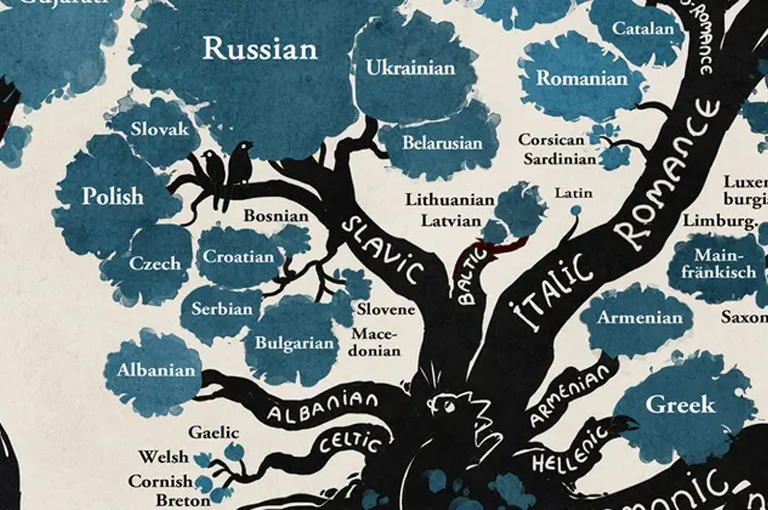- Location
- BH 142
- Days and Times
- Tuesday/Thursday, 4:45pm - 6:00pm
- Course Description
Overview - The Slavic languages form an important subgroup of Indo-European and are spoken from East and Central Europe, through the Balkans, and across northern Asia, and serve as a lingua franca across Central Asia. Its three branches are composed of over a dozen living languages and boast well over 400 million speakers. A range of linguistic approaches allow students to analyze new data, organize them according to varying criteria, and draw conclusions about the development and current state of the Slavic languages. Students acquire foundational concepts in linguistic analysis which they use to analyze a great array of language materials from modern Slavic languages, inductively writing rules which they then test with new data and drawing conclusions about the evolution of languages and the forces which shape them. However, rather than learn about these "exotic" languages through arbitrary rules, students are given data sets and different tasks to allow them to develop their own rules inductively, and then test those with additional data from other Slavic languages. The course is meant to be a fun and interactive approach to exploring linguistic processes, and hopefully will encourage students to take a full four-skills course in the future. No previous experience with Slavic languages is required, but an active curiosity about how people use and change language will prove to be a plus.
Learning Objectives - After successfully completing this course, students will be able to:
- identify, compare, and contrast a dozen modern Slavic languages, based on their alphabets, phonological systems, lexicons, and verb systems;
- demonstrate the correspondences between the sound systems and writing systems of multiple languages, as well as evaluating the advantages and disadvantages of different orthographic systems;
- apply basic linguistic concepts to analyze and draw conclusions about new data sets;
- describe with examples the types of processes involved in a proto-language developing, changing, and splitting into multiple languages over a millennium and a half;
- explain the processes of borrowing and stylistic variation, which lead to change and variety within a language's lexicon;
- analyze the complex interaction of political, religious, and social pressures that lead to the establishment of a national language or a liturgical language, as well as to the suppression prohibition of other languages and dialects;
- compare and contrast some features of at least one Slavic language to those of one or more non-Slavic languages that the student knows, in order to judge the difficulty of acquisition for the two or to construct a contrastive grammar; and
- share with an audience work or research on a linguistic feature using field-specific terminology and concepts.
Russian, Ukrainian, Belarusian, Rusyn, Czech, Polish, Slovak, Upper Sorbian, Lower Sorbian, Kashubian, Silesian, Serbian, Croatian, Bosnian, Bulgarian, Macedonian, Slovene, Montenegrin, Church Slavonic, Proto-Slavic, Common Slavic, Old Church Slavonic, Polabian, Old Novgorodian
Introduction to the Slavic Languages

 The College of Arts
The College of Arts